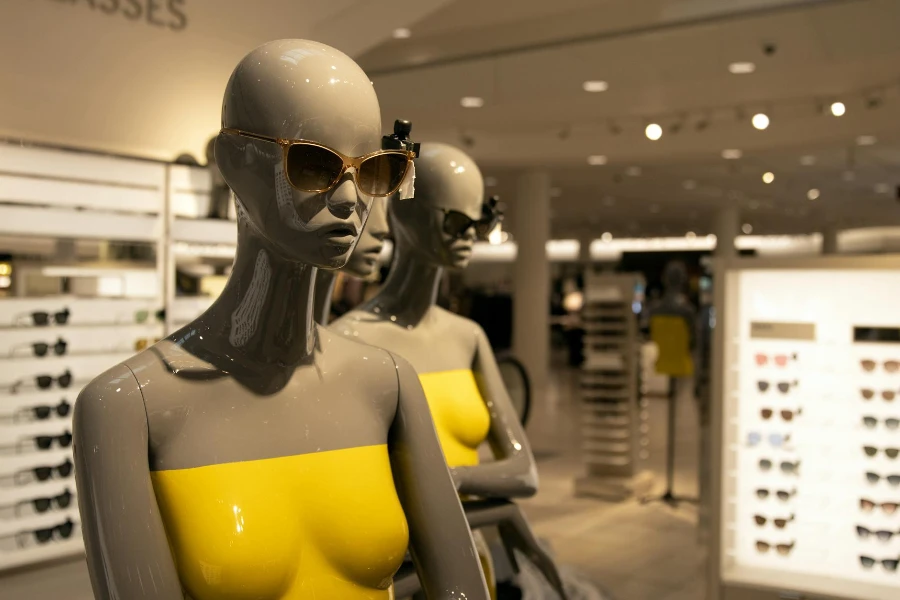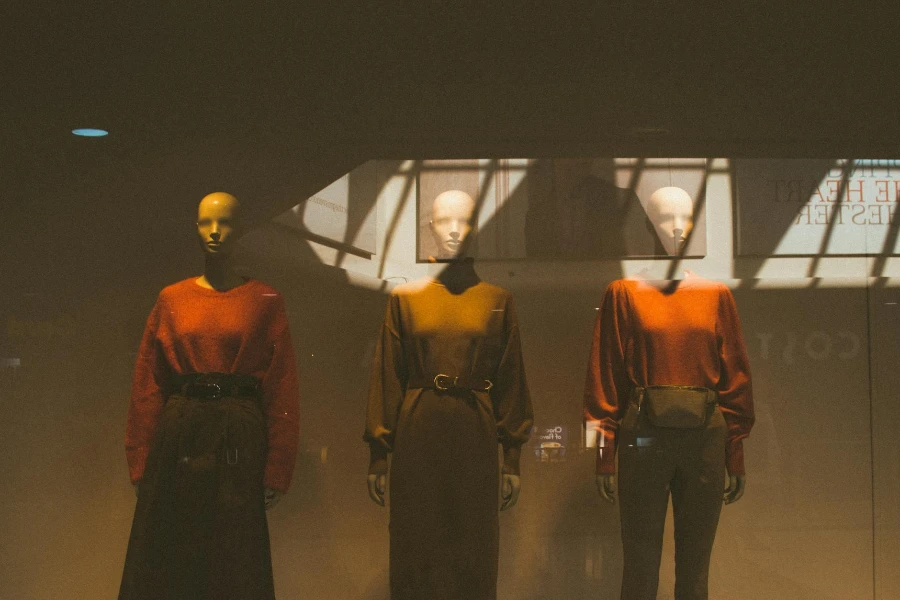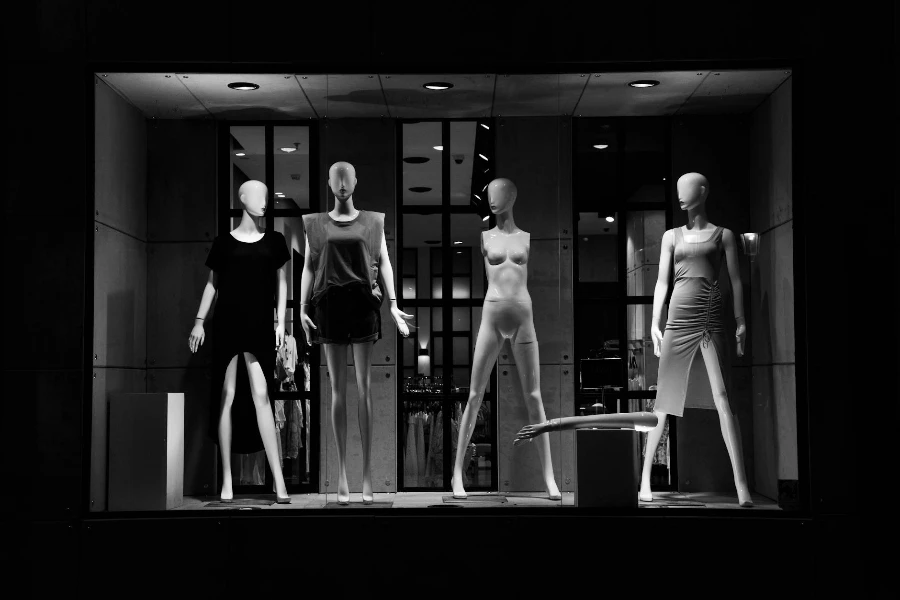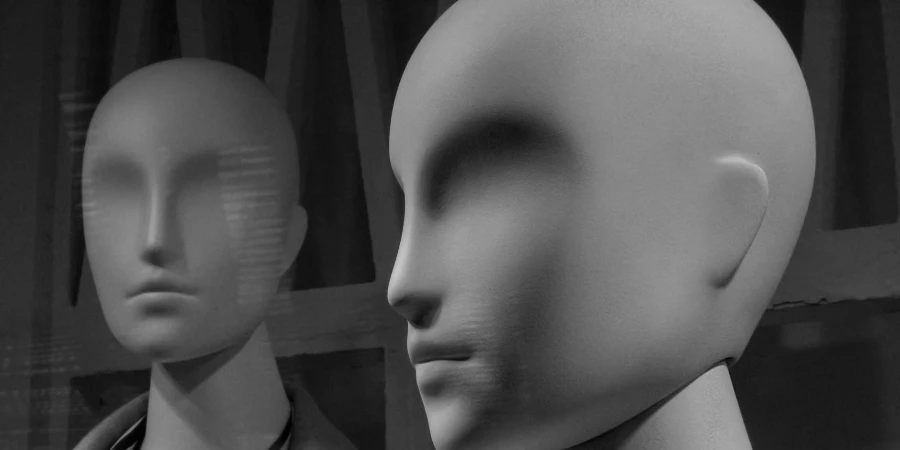Mannequins, often overlooked, play a crucial role in the apparel industry, serving as the silent salespeople that bring clothing to life. This article delves into the essence of mannequins, their soaring popularity, the variety of styles available, and tips on styling them effectively. Join us as we explore these pivotal figures of the fashion world.
Table of Contents:
1. What is a mannequin?
2. The rising popularity of mannequins
3. Top styles of mannequins
4. How to style mannequins
What is a mannequin?

Mannequins are three-dimensional models used by retailers, designers, and artists to display clothing, jewelry, and other accessories. Traditionally made from materials like wood, wax, or plaster, modern advancements have introduced mannequins made from fiberglass and plastic, offering durability and ease of handling. These display figures can vary vastly in style, from realistic to abstract, tailored to showcase different fashion trends and appeal to various demographics.
The primary purpose of a mannequin is to present apparel in its best light, simulating how the garments would look on a human body. This not only helps customers visualize the clothing on themselves but also aids in creating dynamic window displays that attract passersby. Moreover, mannequins can be equipped with adjustable parts, allowing for a range of poses that mimic human movements, further enhancing the realism and appeal of the displayed items.
In addition to their functional role, mannequins also serve an aesthetic purpose. Their design and presentation can reflect the brand’s identity and ethos, contributing to the overall shopping experience. From sleek, minimalistic figures to more detailed, lifelike models, mannequins are an essential tool in visual merchandising, capable of transforming a simple garment into a compelling fashion statement.
The rising popularity of mannequins

The use of mannequins in retail has seen a significant uptick in recent years, driven by the retail industry’s recognition of effective visual merchandising’s impact on sales. As brick-and-mortar stores face increasing competition from online retailers, the need to create engaging, immersive shopping experiences has never been more critical. Mannequins, with their ability to showcase clothing in realistic, appealing ways, have become a key component of this retail strategy.
This growing popularity is also fueled by advancements in mannequin design and technology. Today’s mannequins are more versatile and adaptable than ever before, with features such as detachable limbs for easy dressing, realistic facial features, and even integrated technology like LED displays. These innovations not only make mannequins more effective as sales tools but also allow for greater creativity in display design.
Furthermore, the rise of social media and online marketing has amplified the importance of visually compelling content, with mannequins playing a crucial role in creating share-worthy images. Retailers are increasingly leveraging mannequins to stage photogenic scenes that resonate with the aesthetics of social media users, further driving the demand for innovative and eye-catching mannequin designs.
Top styles of mannequins

Mannequins come in a variety of styles, each designed to cater to different retail needs and aesthetic preferences. The most common types include:
- Realistic Mannequins: These models feature detailed facial features, hair, and sometimes even makeup, closely mimicking human appearance. They are ideal for high-end retailers looking to create a sophisticated, lifelike display that resonates with customers on a personal level.
- Abstract Mannequins: Characterized by their lack of detailed facial features and often possessing exaggerated proportions, abstract mannequins are perfect for retailers aiming for a modern, artistic vibe. Their simplicity and elegance make them versatile tools for showcasing a wide range of apparel.
- Poseable Mannequins: With adjustable limbs and sometimes torsos, poseable mannequins offer the ultimate flexibility in display design. They can be arranged in various poses to simulate movement, adding dynamism to window displays and in-store setups.
Each style offers its unique benefits, and the choice between them depends on the retailer’s brand identity, the type of clothing being displayed, and the desired interaction with the target audience.
How to style mannequins

Styling mannequins is an art form that requires a keen eye for fashion, an understanding of the brand’s identity, and a grasp of current trends. Here are some tips to effectively style mannequins:
- Understand Your Audience: Choose outfits and poses that resonate with your target demographic. Consider the lifestyle, preferences, and aspirations of your ideal customer when selecting garments and arranging displays.
- Focus on Coordination: Ensure that the clothing, accessories, and mannequin’s pose work together harmoniously to tell a cohesive story. The goal is to create a visually appealing setup that highlights the garments’ features and benefits.
- Keep It Fresh: Regularly update your mannequin displays to reflect new arrivals, seasonal trends, and current promotions. This not only keeps your visual merchandising dynamic but also encourages repeat visits from customers eager to see what’s new.
Conclusion:
Mannequins are indispensable tools in the apparel industry, offering retailers a powerful means of showcasing their products in the most attractive light. With their growing popularity and the continuous evolution of styles and technologies, mannequins are set to remain a central element of retail display strategies. By understanding the different styles available and mastering the art of styling, retailers can leverage mannequins to enhance their visual merchandising, engage customers, and ultimately drive sales.




